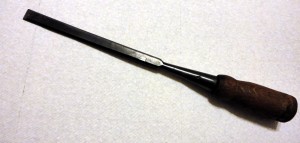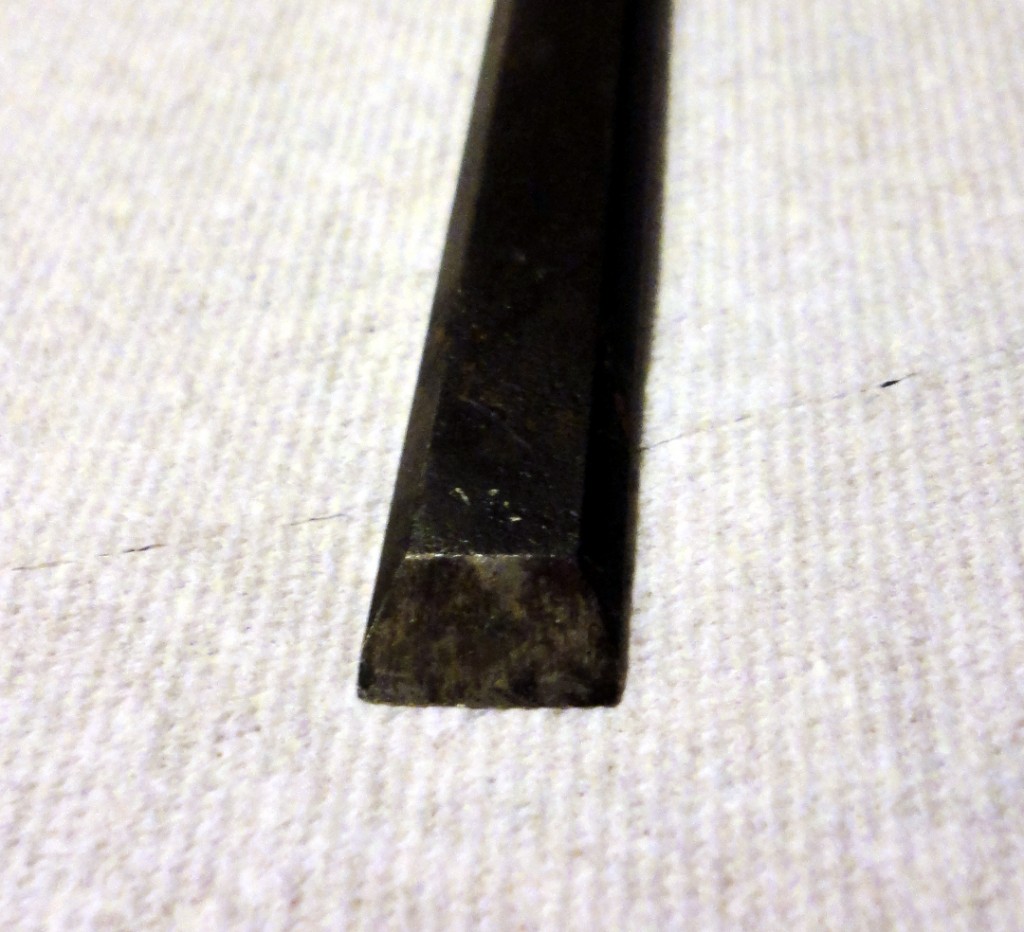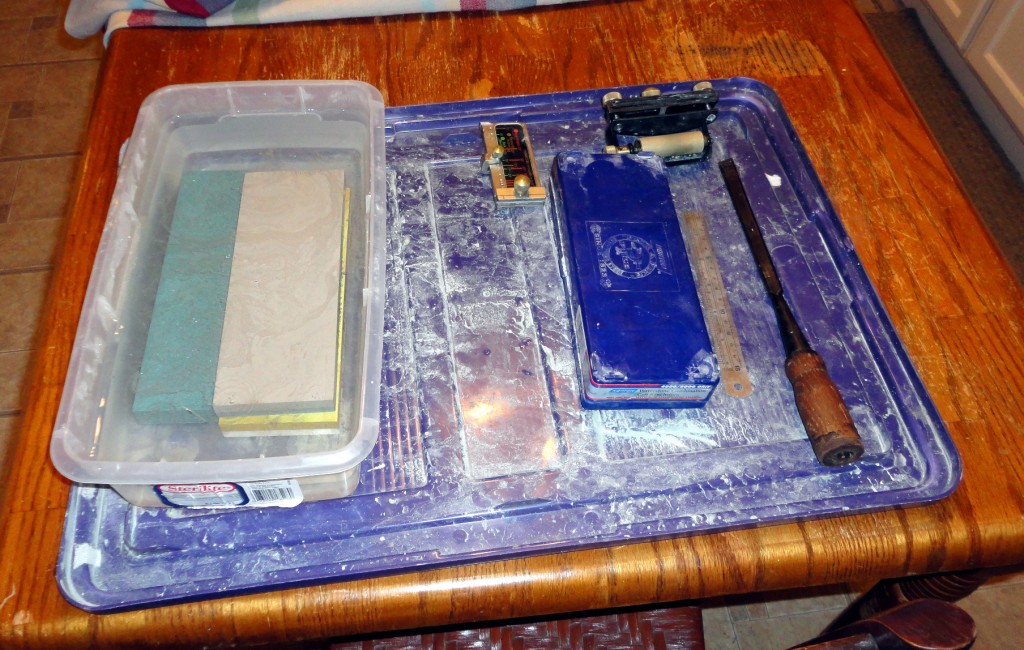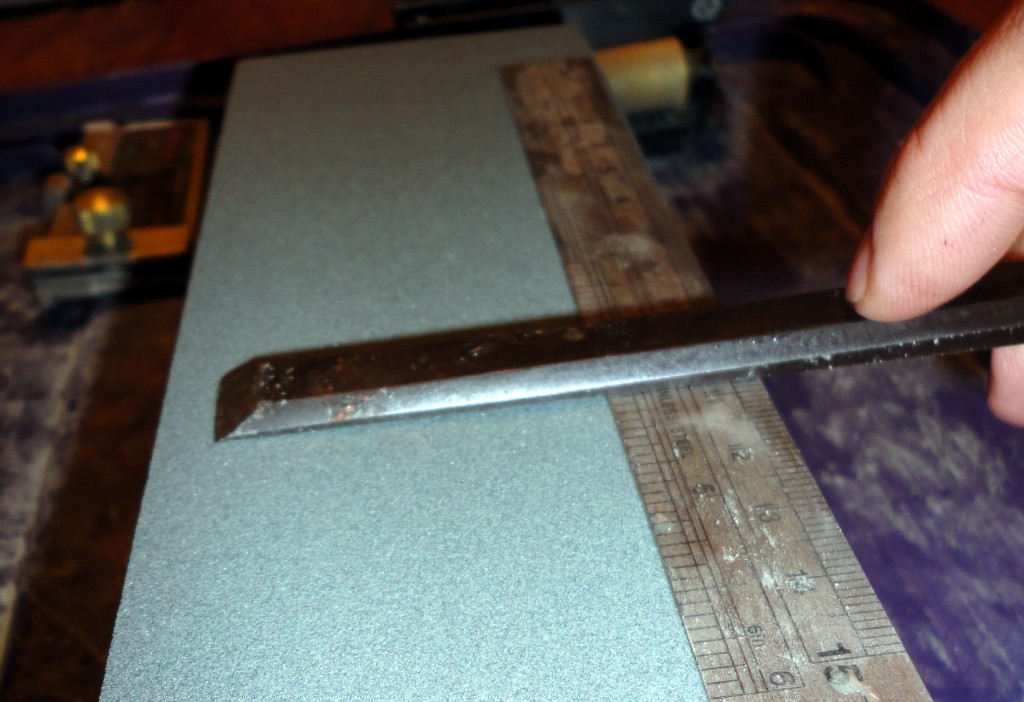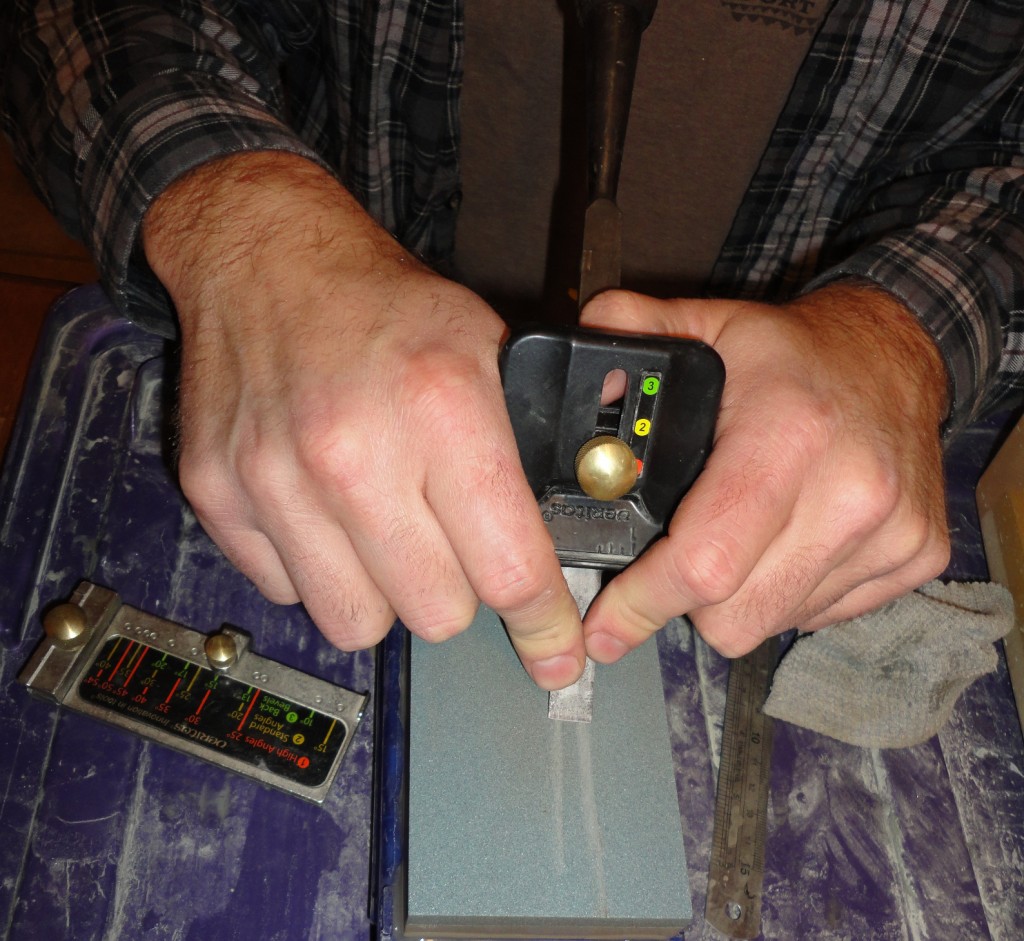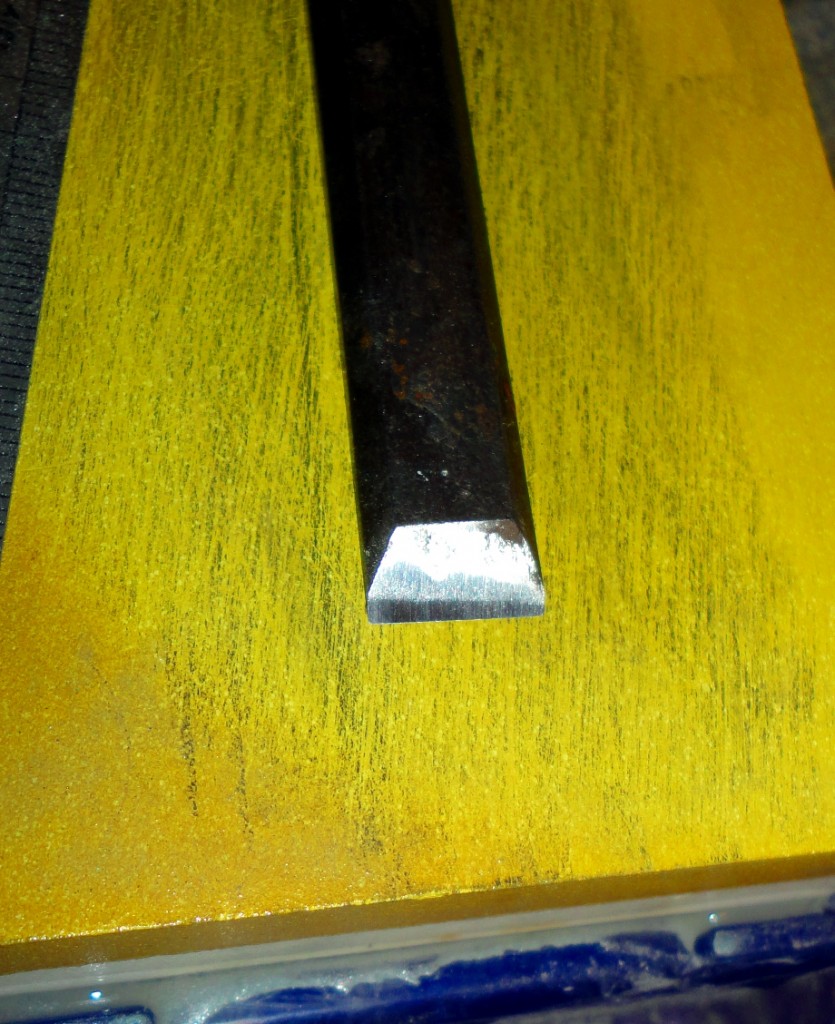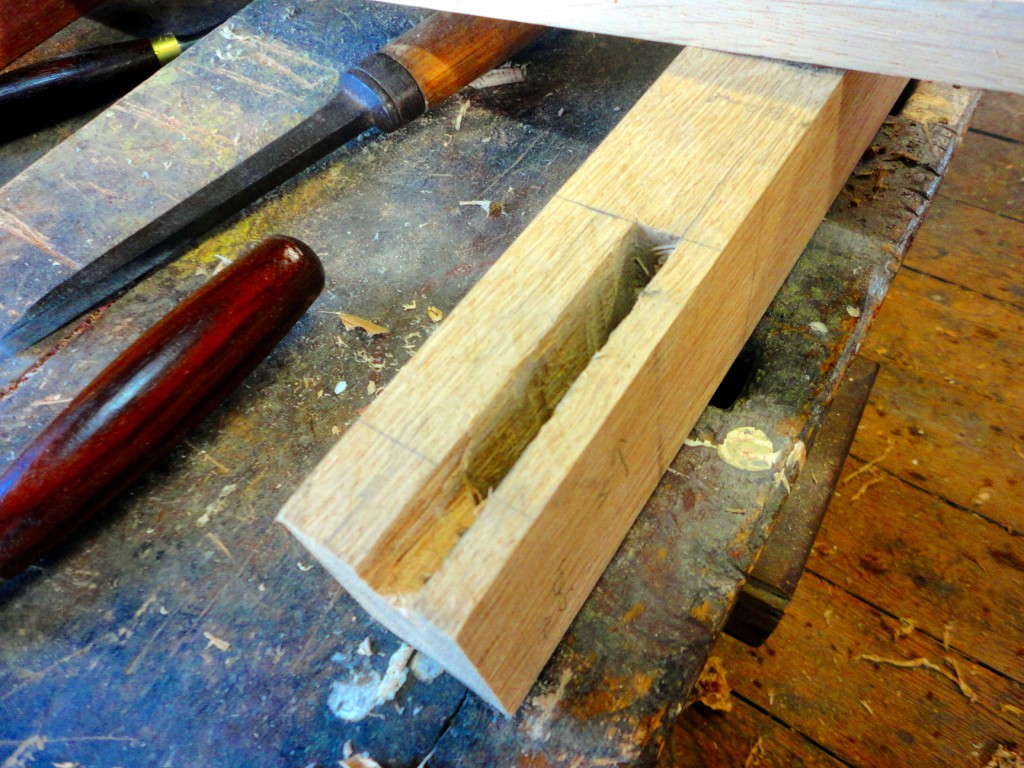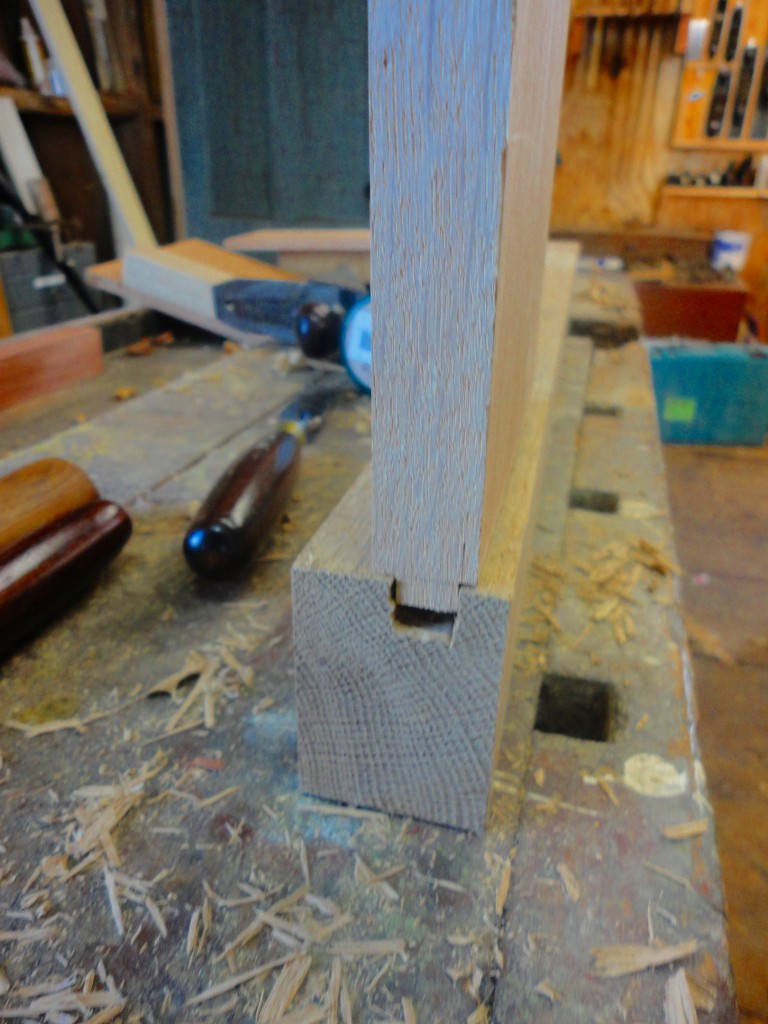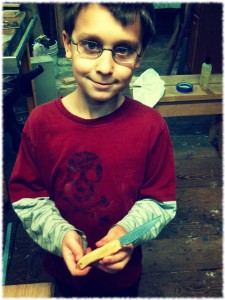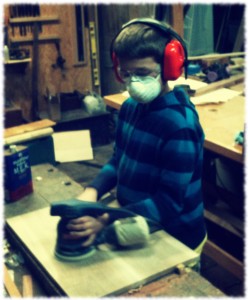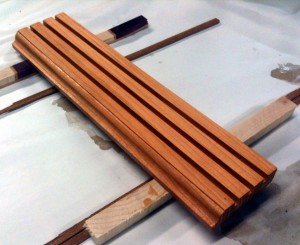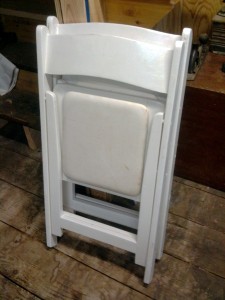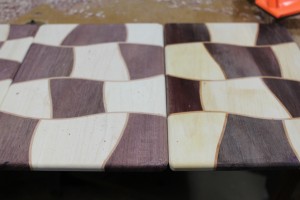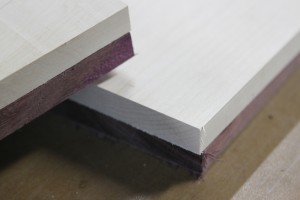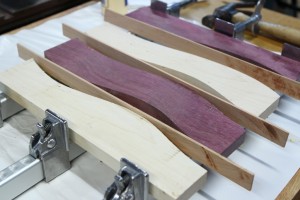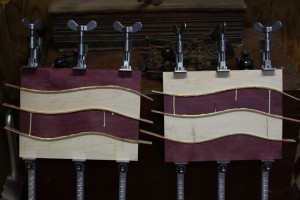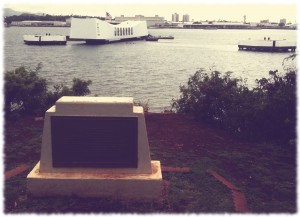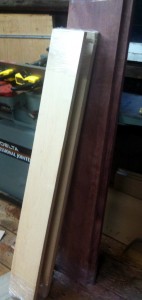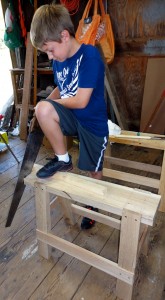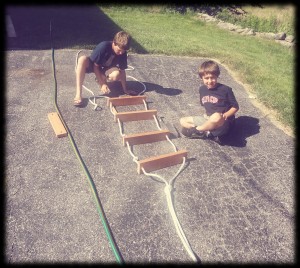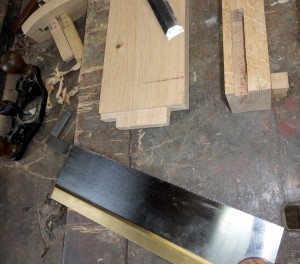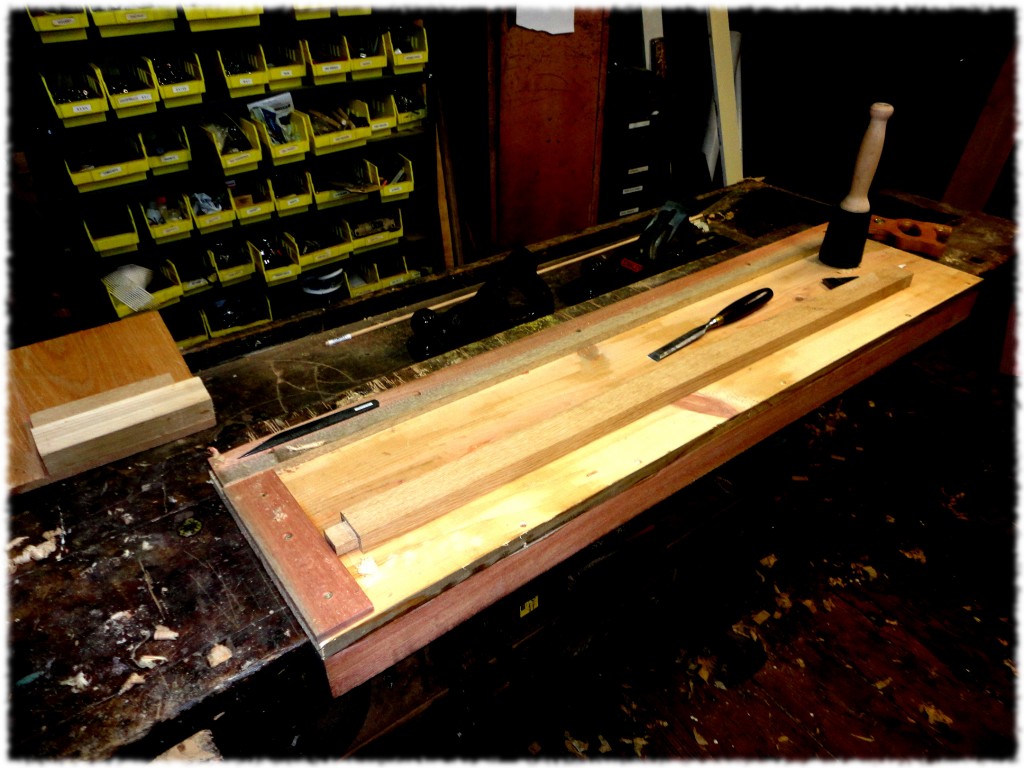
I was finally able to get time in the workshop today. I have been a bit sidetracked with renovations to Will’s room over the past two weeks. One thing that has helped is trying to do two hours of work a day on the room. On the week nights, that gets progress done on the room. On the weekend, that allows me to find time to do other things without feeling guilty.
I was able to complete my two hours on the room by lunch today and take some time in the afternoon to head out to the shop. The weather has been crazy – it is mid-January and 50 degrees out.
I am making progress on the kitchen island. I have all the mortises done, and half of the tenons cut. Today I decided to build a planing stop. One of the frustrations with the workbench I have is holding the work while I hand plane. In the past I have put a board across the bench and clamped it on. That works fine if I am planing only in the direction of the grain. If I try to plane cross-grain, I need to fully clamp the work in the bench. It is a pain in the butt to always clamp and unclamp the work.
That leads me to the planning stop/bench hook I built today. I’m not sure if it is traditional, and time will tell how well it works. I took a 48-inch long 1×12 piece of pine and attached a board to the front (so it will register on the front of the workbench). I then took some thin stock (or rather made thin stock – about 1/2-inch thick) and attached it to the back and left side of the top of the board.
So far it seems to be working as planned. It makes cleaning up the long pieces of wood for the kitchen island much easier. It also gives me a nice board to chisel on and not worry about chopping up the top of the workbench. I suppose if I need to work on any pieces longer than about 44-inches I’ll need to build a new stop.

